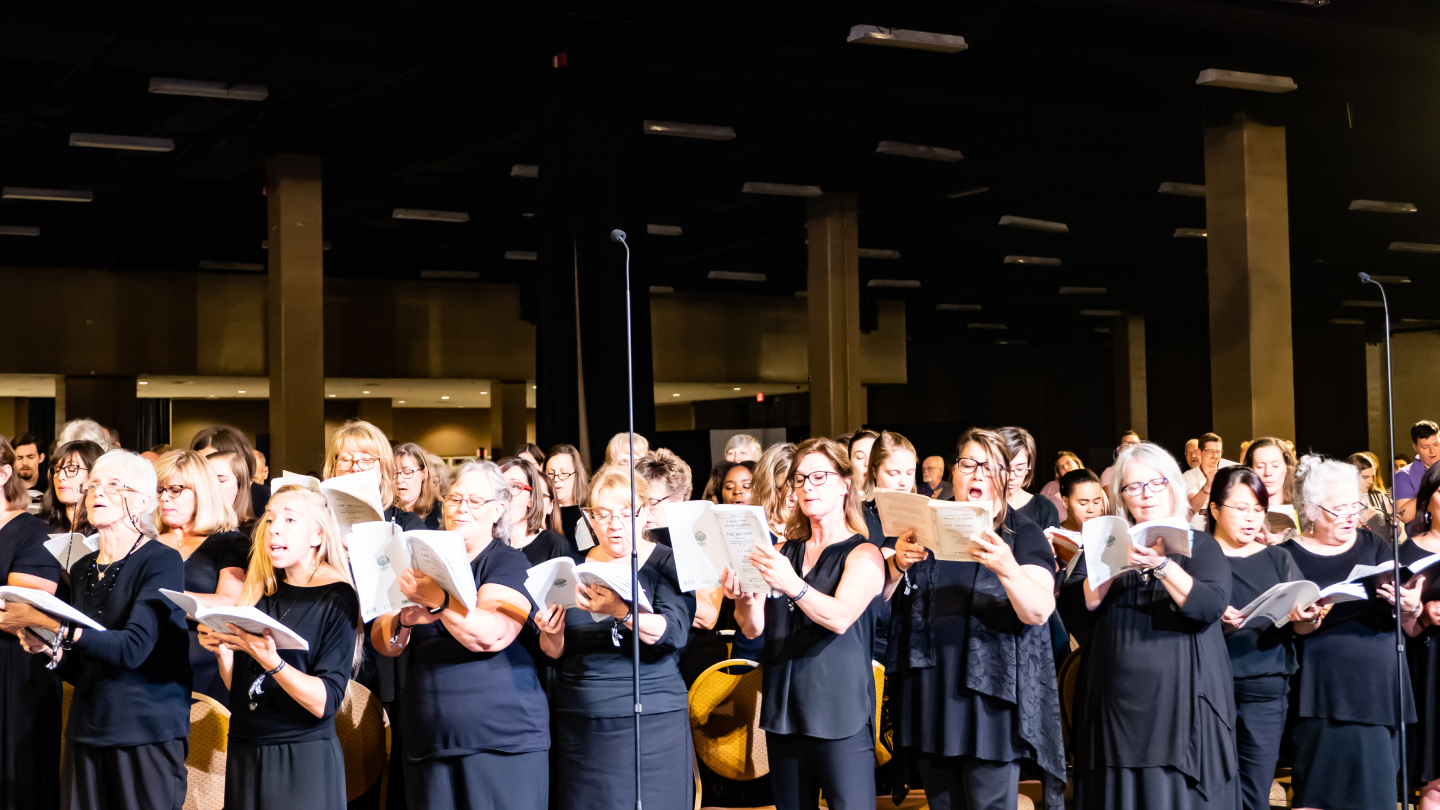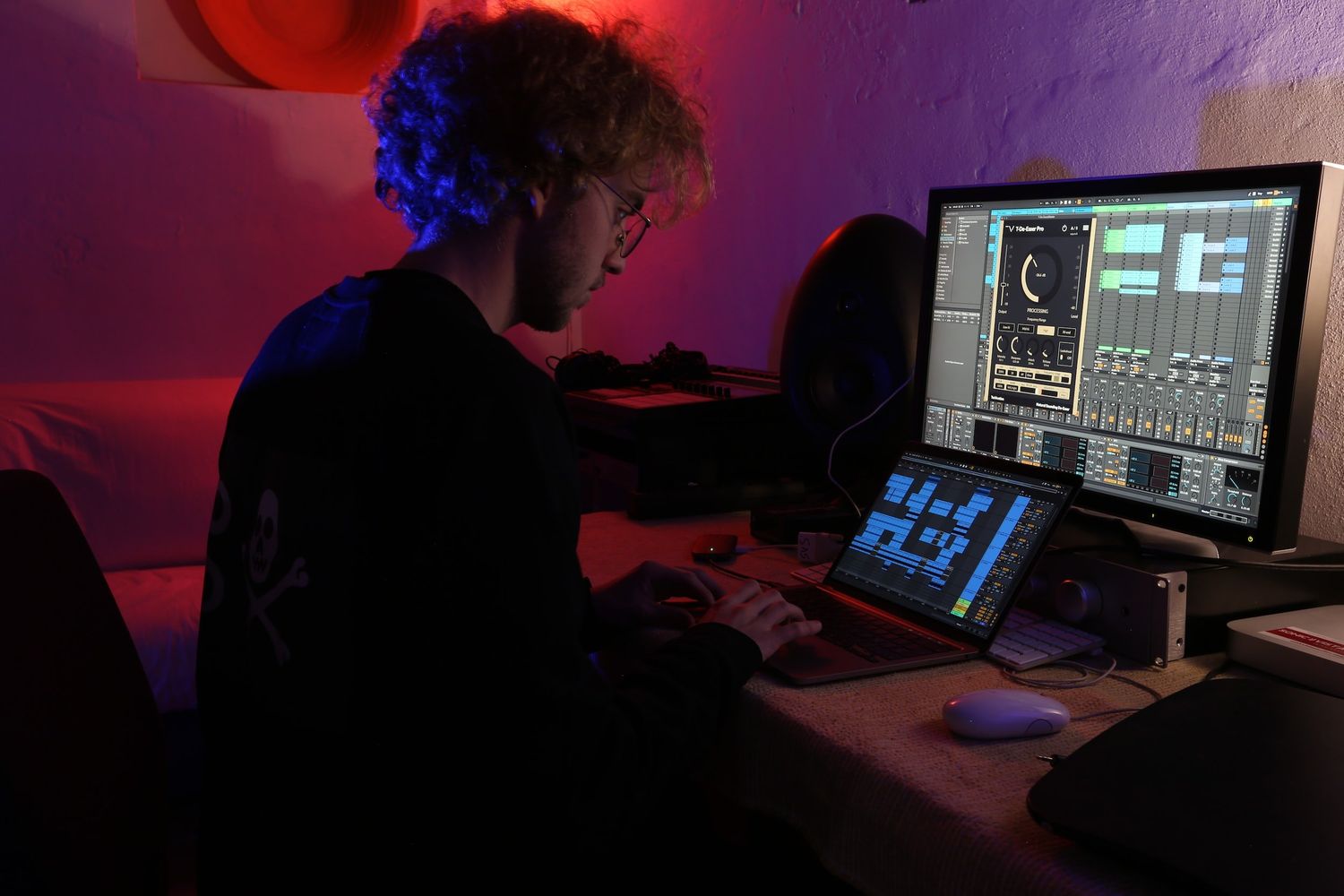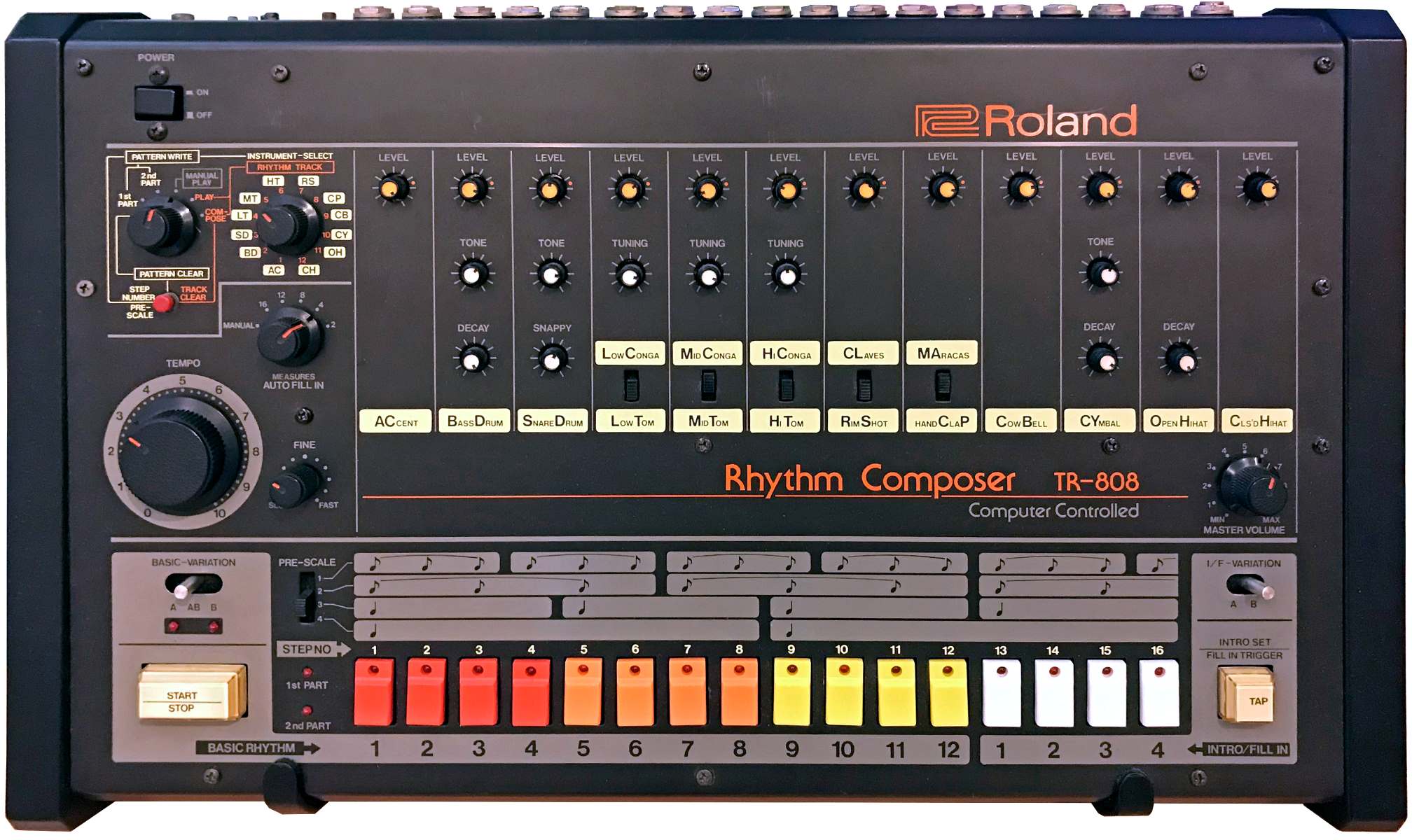Home>Production & Technology>Choir>How To Mix Choir Vocals


Choir
How To Mix Choir Vocals
Published: February 23, 2024
Learn how to mix choir vocals with our expert tips and techniques. Enhance the sound of your choir with professional mixing advice.
(Many of the links in this article redirect to a specific reviewed product. Your purchase of these products through affiliate links helps to generate commission for AudioLover.com, at no extra cost. Learn more)
Table of Contents
Introduction
When it comes to creating a captivating and harmonious choir performance, mixing vocals plays a pivotal role in achieving a polished and professional sound. Whether you are working with a small ensemble or a large choir, understanding the intricacies of mixing choir vocals is essential for bringing out the full potential of the voices and capturing the essence of the music. This comprehensive guide will delve into the art of mixing choir vocals, covering everything from selecting the right microphones to utilizing effective processing techniques.
Properly mixing choir vocals involves a delicate balance of technical expertise and artistic sensibility. It requires a keen understanding of audio equipment, acoustics, and the nuances of vocal performance. By mastering the techniques outlined in this article, you will be able to elevate the sonic quality of the choir, accentuate the emotive nuances of the vocalists, and create a mesmerizing auditory experience for the audience.
In the following sections, we will explore the crucial steps involved in mixing choir vocals, starting with the selection of the right microphones to capture the diverse vocal textures and harmonies. We will then move on to the setup of the microphones, ensuring optimal positioning and acoustical considerations. Balancing the levels of the individual vocal tracks is another essential aspect that contributes to a cohesive and well-blended choir sound. Additionally, we will delve into the use of effects and processing techniques to enhance the vocals while maintaining a natural and authentic timbre.
Furthermore, this guide will provide insights into advanced mixing techniques tailored specifically for choir vocals, empowering you to sculpt the sonic landscape with finesse and creativity. By the end of this journey, you will be equipped with the knowledge and skills to elevate the choir vocals to new heights, creating a captivating sonic tapestry that resonates with the hearts and minds of the listeners.
Embark on this enriching exploration of mixing choir vocals, and unlock the potential to transform raw vocal performances into a harmonious and captivating auditory masterpiece. Let's dive into the intricacies of this art form and unleash the full potential of choir vocals through the power of mixing techniques.
Choosing the Right Microphones
Selecting the right microphones forms the foundational cornerstone of achieving exceptional choir vocal mixes. The diverse range of vocal textures and harmonies within a choir necessitates a thoughtful approach to microphone selection. Each microphone possesses unique sonic characteristics, making it crucial to choose models that can faithfully capture the nuances of the individual voices while preserving the overall blend and tonal integrity of the choir.
When choosing microphones for choir vocals, it is essential to consider the following factors:
1. Microphone Types:
- Condenser Microphones: Known for their sensitivity and ability to capture intricate details, condenser microphones are well-suited for capturing the rich harmonies and subtle nuances present in choir performances. They excel in reproducing the full dynamic range of the vocals, making them an ideal choice for capturing the expressive qualities of choir singers.
- Large Diaphragm vs. Small Diaphragm: Large diaphragm microphones are favored for capturing the warmth and depth of the lower vocal registers, while small diaphragm microphones excel in capturing the clarity and precision of the higher registers. Utilizing a combination of both types can effectively capture the full spectrum of the choir's vocal range.
2. Polar Patterns:
- Omnidirectional vs. Cardioid: Omnidirectional microphones capture sound from all directions, making them suitable for capturing the ambient acoustics of the performance space and the overall choir blend. On the other hand, cardioid microphones are adept at isolating individual voices and minimizing background noise, making them ideal for capturing soloists or sections within the choir.
3. Acoustic Environment:
- Consider the acoustics of the recording space when choosing microphones. A reverberant space may benefit from the focused pickup of cardioid microphones, while a more controlled environment could accommodate the ambient capture of omnidirectional microphones.
4. Budget and Resources:
- While premium microphones offer exceptional sonic fidelity, there are also budget-friendly options that can deliver satisfactory results. It is important to strike a balance between quality and budget, ensuring that the chosen microphones align with the specific sonic requirements of the choir.
By carefully evaluating these factors, you can make informed decisions when selecting microphones for choir vocals, thereby setting the stage for capturing the essence and beauty of the choir's collective voice. The next step in the process involves setting up the microphones to optimize their performance and capture the full sonic spectrum of the choir's vocal ensemble.
Setting Up the Microphones
Setting up the microphones for a choir recording or live performance is a critical step that significantly influences the overall sonic quality and spatial representation of the vocal ensemble. Proper microphone placement and configuration are essential for capturing the individual voices while preserving the cohesive blend and harmonic richness of the choir. Here's a detailed exploration of the key considerations and techniques for setting up microphones to achieve an exceptional choir vocal mix.
1. Positioning and Spacing:
- Main Microphone Array: Utilize a main microphone array positioned to capture the overall sound of the choir. This array may consist of a combination of omnidirectional and cardioid microphones strategically placed to capture the full scope of the choir's vocal range and blend.
- Soloist and Section Microphones: For larger choirs or performances featuring soloists or specific sections, individual microphones can be positioned to capture their distinct contributions to the overall performance. Cardioid microphones are often used for this purpose to isolate specific vocal elements while minimizing bleed from surrounding voices.
2. Acoustic Considerations:
- Room Acoustics: Take into account the acoustic characteristics of the recording or performance space. If the room exhibits excessive reverberation, adjustments in microphone placement and the use of directional microphones may be necessary to control ambient pickup and maintain clarity.
- Ambient Microphones: In certain scenarios, ambient or room microphones can be strategically placed to capture the natural acoustics and spatial dimensions of the performance space, adding depth and dimension to the choir's sonic portrayal.
3. Microphone Techniques:
- Decca Tree Technique: This technique involves utilizing a central omnidirectional microphone flanked by two spaced cardioid microphones, creating a balanced and immersive capture of the choir's soundstage.
- AB Stereo Pair: Employing a pair of spaced omnidirectional microphones, known as an AB stereo pair, can effectively capture the overall blend and spatial distribution of the choir within the performance space.
4. Sound-Check and Monitoring:
- Balancing Levels: Conduct thorough sound-checks to ensure balanced levels and optimal microphone positioning. Pay close attention to the relative balance between the different sections of the choir and make necessary adjustments to achieve a cohesive and well-blended sound.
- Monitoring Setup: Utilize high-quality monitoring systems to accurately assess the captured sound and make real-time adjustments during the recording or live performance.
By meticulously addressing these aspects of microphone setup, you can create an environment that optimally captures the choir's vocal essence while accommodating the spatial and acoustical intricacies of the performance space. The next phase involves the crucial process of balancing the levels to ensure a cohesive and harmonious blend of the individual vocal tracks.
Balancing the Levels
Balancing the levels of individual vocal tracks is a pivotal stage in the process of mixing choir vocals. This step involves meticulously adjusting the volume and relative levels of each vocal track to achieve a cohesive and harmonious blend that showcases the collective artistry of the choir. By carefully balancing the levels, the unique timbre and expressive nuances of each voice can be showcased while maintaining a unified sonic tapestry that resonates with clarity and emotional depth.
1. Gain Staging:
Establishing proper gain staging is fundamental to achieving optimal level balance. Begin by setting appropriate input levels at the preamp stage to ensure a healthy signal-to-noise ratio without introducing distortion. This initial gain setting lays the foundation for subsequent level adjustments and processing.
2. Vocal Grouping:
When working with a large choir, it is beneficial to group vocal sections based on their respective ranges and roles within the ensemble. By categorizing the voices into logical groups, such as soprano, alto, tenor, and bass, it becomes easier to manage and balance the levels of each vocal section while preserving the overall harmonic balance and blend.
3. Dynamic Range Control:
Utilize dynamic range processing, such as compression and expansion, to manage the dynamic fluctuations within individual vocal performances. Carefully applied compression can help maintain consistent levels and control peaks, ensuring that softer passages are adequately represented without getting lost in the mix, while also preventing louder sections from overpowering the overall balance.
4. Fader Adjustments:
Engage in meticulous fader adjustments to fine-tune the levels of each vocal track within the mix. Pay close attention to the interplay between the different vocal sections, making subtle adjustments to achieve a seamless and balanced integration of the voices. By attentively riding the faders, you can accentuate the emotive nuances of the choir's performance while maintaining a coherent sonic presentation.
5. Panning and Spatial Placement:
In addition to adjusting volume levels, consider the spatial placement of the vocal tracks within the stereo field. Utilize panning to position the different vocal sections across the stereo spectrum, creating a sense of spatial depth and dimension within the mix. Thoughtful spatial placement can enhance the immersive quality of the choir's vocal presentation, adding an extra layer of richness to the sonic landscape.
6. Real-Time Monitoring:
During the level balancing process, continuous real-time monitoring is essential to assess the impact of level adjustments on the overall choir mix. Utilize high-quality studio monitors or headphones to critically evaluate the balance and coherence of the vocal ensemble, making iterative adjustments to achieve an optimal sonic portrayal.
By meticulously addressing these aspects of level balancing, you can sculpt a cohesive and harmonious blend of the choir's vocal performances, ensuring that each voice contributes to a unified sonic tapestry that captivates and resonates with the audience. The next phase involves leveraging effects and processing techniques to further enhance the choir's vocal presentation, adding depth, polish, and emotional resonance to the mix.
Using Effects and Processing
The art of using effects and processing techniques plays a transformative role in shaping the sonic character and emotive impact of choir vocals. By applying a thoughtful blend of effects and processing, the choir's vocal performances can be imbued with depth, polish, and expressive resonance, elevating the auditory experience for the listeners. Let's delve into the intricacies of utilizing effects and processing to enhance the choir's vocal presentation.
1. Reverb and Ambience:
Introducing reverberation and ambient effects can infuse the choir vocals with a sense of space and dimension, creating a captivating sonic environment. Carefully tailored reverb settings can emulate the acoustics of different performance spaces, ranging from intimate chambers to grand cathedrals, adding a touch of sonic grandeur to the choir's vocal portrayal. By adjusting the reverb parameters, such as decay time and pre-delay, the spatial depth and immersive quality of the vocals can be finely tuned to complement the emotional nuances of the performance.
2. Equalization (EQ):
Strategic application of EQ allows for sculpting the tonal balance and clarity of the choir vocals. By delicately shaping the frequency spectrum, the inherent warmth of the lower registers, the brilliance of the higher ranges, and the midrange presence can be accentuated, ensuring that each vocal section occupies its rightful sonic space within the mix. Additionally, EQ can be employed to mitigate frequency masking and resonances, refining the overall tonal coherence of the choir ensemble.
3. Dynamics Processing:
Utilizing dynamics processing tools such as compression and limiting facilitates the control of vocal dynamics, ensuring a consistent and polished sonic presentation. By applying gentle compression, the vocal performances can be smoothed out, enhancing their perceptual loudness and cohesiveness. Furthermore, multiband compression enables targeted dynamic control across specific frequency ranges, allowing for nuanced shaping of the choir's collective dynamics while preserving the natural expressiveness of the individual voices.
4. Harmonic Enhancement:
Harmonic enhancement techniques, including saturation and harmonic excitation, can enrich the choir vocals with added warmth, presence, and harmonic complexity. Subtle application of saturation imparts a sense of analog warmth and vitality to the vocals, while harmonic exciters can introduce shimmering overtones and sonic brilliance, elevating the choir's vocal timbre and overall sonic allure.
5. Spatial Effects:
Incorporating spatial effects such as stereo widening and modulation can expand the sonic panorama of the choir vocals, creating a captivating sense of spatial movement and dimension. By judiciously applying stereo widening techniques, the choir's vocal ensemble can be imbued with a broadened sonic presence, enveloping the listeners in an expansive auditory canvas. Additionally, modulation effects, including chorus and flanging, can introduce subtle timbral variations, adding a touch of ethereal allure to the choir's vocal performances.
By skillfully integrating these effects and processing techniques, the choir's vocal mix can be transformed into a captivating sonic tapestry that resonates with emotional depth, spatial richness, and sonic allure. The judicious application of effects and processing serves to elevate the choir's vocal presentation, creating an immersive auditory experience that captivates and inspires the listeners.
Mixing Techniques
The art of mixing choir vocals encompasses a diverse array of techniques tailored to sculpt the sonic landscape and elevate the expressive impact of the vocal ensemble. From intricate vocal balancing to spatial manipulation and tonal refinement, mastering the nuances of mixing techniques is essential for crafting a cohesive and captivating choir vocal mix. Let's embark on a comprehensive exploration of the essential mixing techniques that empower you to unleash the full potential of choir vocals.
1. Vocal Automation:
Harnessing the power of vocal automation allows for precise control over the dynamic nuances of the choir vocals. By automating the volume levels, panning positions, and effect parameters, you can sculpt intricate changes throughout the performance, ensuring that each vocal section receives the attention it deserves. Automation enables seamless adjustments, such as subtle volume rides during delicate passages and spatial movements that enhance the immersive quality of the vocal presentation.
2. Vocal Group Processing:
Implementing group processing techniques tailored to the distinct vocal sections of the choir fosters a cohesive sonic blend. By applying specific EQ, compression, and spatial processing to individual vocal groups, such as the soprano, alto, tenor, and bass sections, you can refine the tonal balance and dynamic coherence within each vocal range. Group processing serves to unify the disparate vocal elements, creating a harmonious sonic tapestry that embodies the collective artistry of the choir.
3. De-Essing and Breath Control:
Addressing sibilance and breath sounds inherent in vocal performances is essential for achieving a polished and refined choir mix. De-essing techniques mitigate excessive sibilant frequencies, ensuring that the vocal articulation remains clear and smooth. Additionally, breath control processing allows for the subtle attenuation of breath noises, preserving the natural expressiveness of the vocals while maintaining a pristine sonic presentation.
4. Stereo Imaging and Depth:
Leveraging stereo imaging and depth enhancement techniques enriches the spatial portrayal of the choir vocals, creating a captivating sense of dimension and immersion. By judiciously applying stereo widening, spatial reverberation, and depth-enhancing effects, you can imbue the vocal ensemble with a three-dimensional sonic presence, captivating the listeners with a compelling auditory panorama that transcends traditional stereo boundaries.
5. Vocal Excursions and Arrangement:
Exploring creative vocal excursions and arrangement variations infuses the choir mix with artistic depth and diversity. By introducing subtle vocal harmonies, ad-libs, and arrangement embellishments, you can elevate the expressive impact of the choir's performance, adding layers of emotional resonance and sonic intrigue. Thoughtful vocal excursions enrich the sonic narrative, captivating the audience with an ever-evolving vocal tapestry.
6. Subtle Dynamic Processing:
Applying subtle dynamic processing, including micro-dynamic adjustments and transient shaping, refines the expressive contour of the choir vocals. By delicately sculpting the transient characteristics and dynamic subtleties of the vocal performances, you can impart a sense of organic fluidity and emotive richness to the choir mix, ensuring that every vocal gesture resonates with clarity and emotional authenticity.
7. Iterative Listening and Refinement:
Engaging in iterative listening sessions and continuous refinement is paramount in achieving an exceptional choir vocal mix. By critically evaluating the mix from various listening perspectives and making iterative adjustments, you can fine-tune the sonic details, balance, and emotional impact of the choir vocals. Iterative refinement ensures that the mix evolves into a captivating auditory masterpiece that resonates with the essence of the vocal ensemble.
Embracing these advanced mixing techniques empowers you to transcend the boundaries of traditional vocal blending, creating a choir vocal mix that captivates the senses and transcends the ordinary. By honing your skills in vocal automation, group processing, spatial manipulation, and artistic arrangement, you can unleash the full potential of choir vocals, crafting a sonic masterpiece that mesmerizes and inspires the audience.
Conclusion
In conclusion, the art of mixing choir vocals is a multifaceted journey that intertwines technical expertise with artistic intuition, ultimately culminating in the creation of a captivating and harmonious auditory experience. Throughout this comprehensive guide, we have traversed the essential steps and techniques that form the bedrock of achieving an exceptional choir vocal mix, from selecting the right microphones to leveraging advanced mixing strategies.
The process begins with the meticulous selection of microphones tailored to capture the diverse vocal textures and harmonies within the choir. By considering factors such as microphone types, polar patterns, and the acoustic environment, one can lay the groundwork for capturing the essence and beauty of the choir's collective voice.
Subsequently, the setup of the microphones plays a pivotal role in optimizing their performance and spatial representation of the vocal ensemble. Strategic positioning, acoustic considerations, and sound-check procedures are essential elements that contribute to the faithful capture of the choir's sonic portrayal.
Balancing the levels of individual vocal tracks emerges as a crucial phase, where meticulous adjustments in gain staging, vocal grouping, dynamic range control, and spatial placement converge to create a cohesive and harmonious blend that accentuates the emotive nuances of each voice while preserving the unified sonic tapestry of the choir.
The judicious application of effects and processing techniques further elevates the choir's vocal presentation, infusing depth, polish, and expressive resonance into the sonic landscape. From reverb and equalization to dynamics processing and spatial effects, each facet contributes to the creation of a captivating auditory canvas that resonates with emotional depth and sonic allure.
Moreover, the exploration of advanced mixing techniques, including vocal automation, group processing, and spatial imaging, empowers the mixing engineer to transcend traditional boundaries, sculpting a choir vocal mix that captivates the senses and inspires the audience.
By embracing the intricacies of mixing choir vocals, one embarks on a transformative odyssey that transcends the technical realm, delving into the heart of artistic expression and sonic storytelling. The culmination of this journey yields a harmonious and captivating auditory masterpiece that resonates with the essence of the vocal ensemble, leaving an indelible imprint on the hearts and minds of the listeners.
In essence, the art of mixing choir vocals is a symphony of technical precision and artistic finesse, where each voice converges to form a tapestry of emotive resonance and sonic grandeur. It is a testament to the power of music and the boundless potential of human creativity, encapsulating the essence of the choir's collective voice in a mesmerizing auditory narrative.











